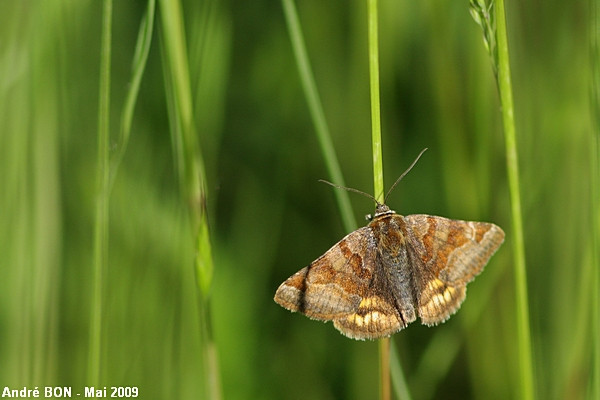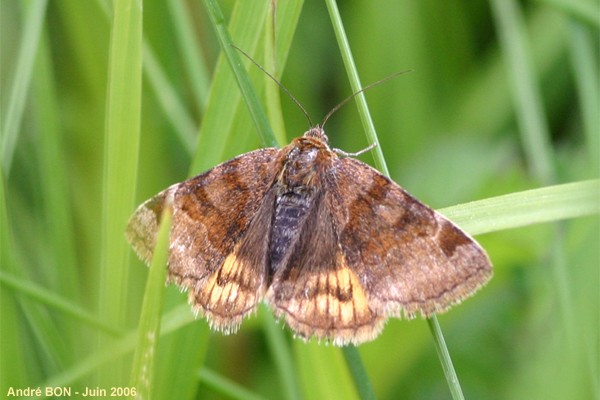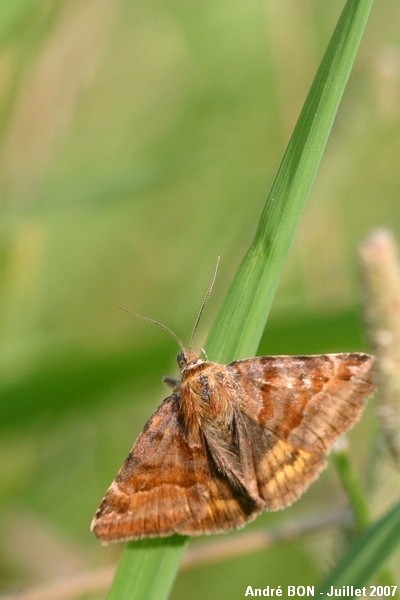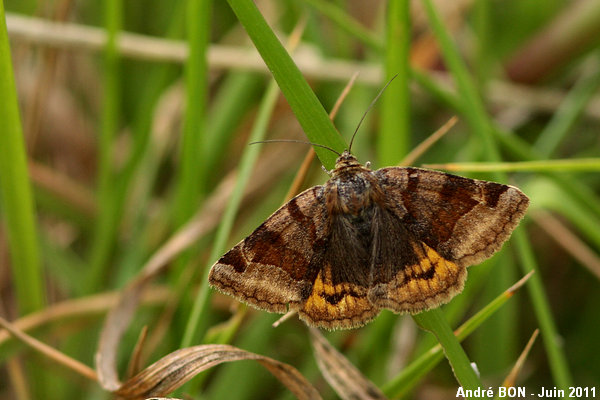



| Burnet Companion (Euclidia glyphica (Linnaeus, 1758)) |




|
|
Scientific name: Euclidia glyphica (Linnaeus, 1758) Common name: Burnet Companion French name: Doublure jaune Order: Lepidoptera Suborder: Heterocera Family: Noctuidae Subfamily: Catocalinae Wingspan: 25-30 mm. Biotope: Meadows up to an altitude of 2000m. Geographic area: Eurasia. Flight time: Late April to mid July, then late July to early September. Number of generations : 2 Caterpillar: Green or yellowish brown with a pale laterale band. Host plant: Clover (Trifolium) and Trefoil (Lotus). |
The fore wings of the Burnet Companion are grey-brown with two dark brown or reddish brown lateral bands. There is also a dark brown or reddish brown triangular mark near the apex of the wing. The hindwings are brown with a wide yellow band covering about one third of the wing on the outer edge. These moths are used to flying during the day and to gathering nectar on meadows' flowers. |
| [To know more about the Burnet Companion] [Next picture] [Top] |

|
All my observations of Burnet Companion have been done in a small clearing. 2009 has been a good year, you had just to shake the high grasses to observe some of them. |
| [To know more about the Burnet Companion] [Next picture] [Previous picture] [Top] |

|
I have observed this butterfly among high grasses. I had some difficulties to find a good angle of view. |
| [To know more about the Burnet Companion] [Next picture] [Previous picture] [Top] |

|
Second observation of a Burnet companion, landed among high grasses again. |
| [To know more about the Burnet Companion] [Previous picture] [Top] |

|
The Burnet Companion is really a very common moth. |